How to build an online community for businesses and grow it
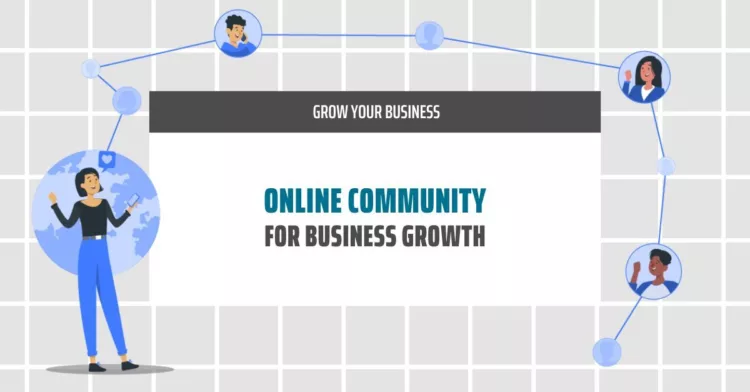
Online communities help ensure business success. An online community fosters relationships between customers and the brand. It, ultimately, helps convert customers into brand advocates who are loyal to the company and can help it grow.
This article outlines steps businesses should follow to build an online community and grow it.
Introduction
Have you noticed how Beyonce and Taylor Swift have hordes of die-hard fans? Have you wondered how they attain this level of customer loyalty? The answer is community.
Likewise, brands like Nike and Apple maintain their competitive edge by creating a strong sense of community among their customers.
It’s no secret that the key to long-term, sustainable business growth is cultivating customer loyalty. Online communities help you achieve this by creating deep connections between brands and customers.
Whether you’re a small business owner or Fortune 500 company, here’s how to build and grow an online community in four simple steps.
What is an online community?
An online community is a group of like-minded people who meet and engage on a digital platform. For example, LinkedIn is an online community of working individuals that gather on the app/website to make professional connections.
There are different types of online communities. You can build an online community based on:
- Interest – an online community developed around a shared hobby or passion
- Learning – one focused on learning goals
- Location – an online community bound within a geographic place in terms of membership or subject matter
- Professional – one that’s limited to members of a specific profession
- Brand – a community centered around a company or individual
Around 90% of social media marketers believe active online communities are critical to business success. The benefits of creating one include building brand authority and credibility, discovering trends within your customer base, and gathering relevant feedback.
4 steps to building and growing an online community
Creating and growing an online community for your business isn’t as simple as inviting people to join your online group. You need to approach community-building strategically. Here are four steps you need to follow:
1. Define your purpose and audience
The first step in building and growing your community is defining the group’s purpose and core audience.
Your goals will determine the type of community you create, its members, your content strategy, and how the community will run.
Common business goals for community building include
- Improved brand or product awareness
- Increased customer engagement
- Efficient feedback collection
- Reduced customer attrition
Once you’ve outlined your goals, you can set appropriate metrics to track them. So, if your business goal is product awareness, you would track product mentions, traffic to product pages, and product search volume.
These aren’t the only measures you should implement. You need to track the effectiveness of your community. Therefore, metrics for user growth (total users, new users, and churn rates) and user engagement (number of likes, comments, and inactive members) are crucial to monitor.
Some key performance indicators are specific to the community. For instance, course content creators must look at completion rates and student scores.
In addition to highlighting community-building goals, define your target audience. You must be clear on who the community is for and how they benefit from participating. A comprehensive buyer persona will help you understand your customers’ preferences, enabling you to craft effective online community strategies.

2. Choose the right platform
Defining your target audience doesn’t just help you create engaging content and product features. It also helps you identify the right platform on which to build an online community. You can choose a platform that has the features that ensure your members’ engagement.
Online community platforms can fall into one of two categories–free and owned.
Free community platforms are free virtual spaces. They include social media sites like Reddit and Facebook.
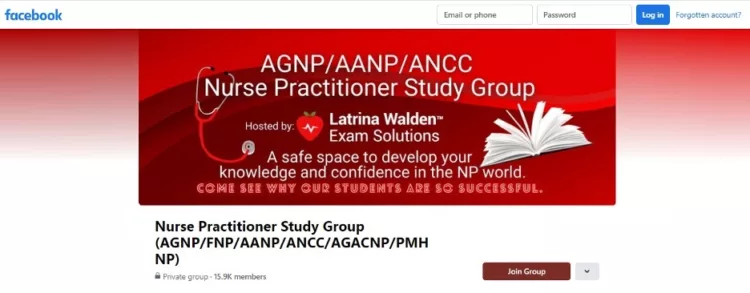
Above is a Facebook page for nurse graduates preparing for certification board exams.
Although these online spaces are free, you lack overall control of the platform. You’re stuck with the platform’s format, you must comply with the terms of service, and if the site goes down, there’s nothing you can do.
That’s why you’re better off with branded community platforms.
Unlike free platforms, owned or branded community platforms may operate under the business’ domain name for better branding.
You can also monetise the community through membership fees. Plus, branded platforms can come with advanced features that make it easy for you to manage your online community.
For instance, with the Circle community platform, you can organise your community into five types of spaces—Posts, Events, Chat, Courses, and Members. You can also control which member actions are allowed in the community. You can restrict or allow them to post content, add other members, or sort posts.
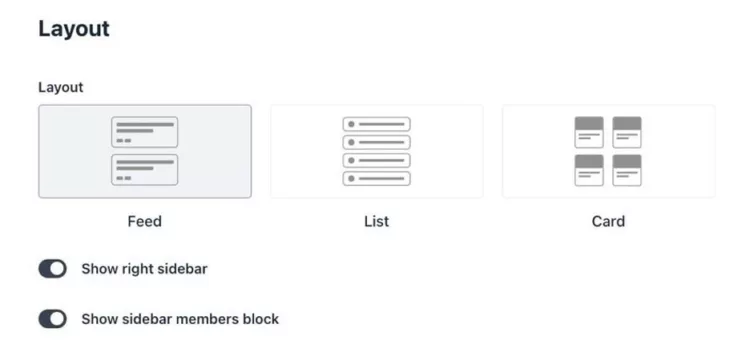
The platform also gives you full control of the look and feel of your community, so you can ensure a consistent brand experience. You can determine how your members see your Posts space, for instance. Do you want them to see a feed, list, or card layout?
When choosing your branded platform, make sure you also consider your business needs.
3. Create engaging content
Let’s assume after setting up your platform, a few people already joined your community. Your job doesn’t end there. Engagement is a vital part of a successful community. The more engaged your community is, the more likely they’ll take your desired action. Try in videos to create better engagement. So, you or your community manager must create compelling content and regularly interact with users.
If you’re unsure how to keep your members active and engaged, here are a few ideas:
- Start a discussion

Asking questions on trending topics like AI content is a great way to spark discussion and create engagement. In fact, AI writing tools are a great source to generate engaging questions to ask your community.
You can also encourage your members to ask questions. Regular ‘Ask Me Anything’ sessions offer businesses an excellent opportunity to touch base with their customers and identify topics of interest or gaps in information.
- Post polls and quizzes
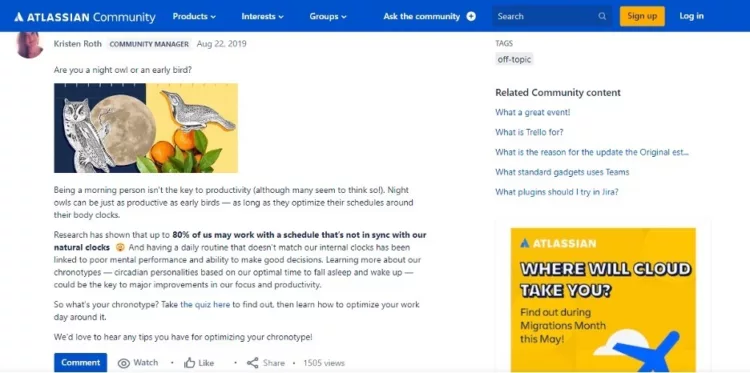
Fun content like this Chronotype quiz is another surefire way to increase community engagement.
- Incentivise member contributions
Gamification encourages member engagement by offering rewards. The more they participate, the higher they rank.

Apple’s support community incentivizes member contributions with reputational points. Users earn points by correctly answering questions and sharing technical expertise. As you accumulate points, your user status rises, making you eligible for privileges like customer avatars and MVP meetups.
Effective online communities sustain themselves. They operate with minimal input from the business. However, this doesn’t mean you can leave engagement to users. Your community manager should be visible by participating in discussions, responding to questions, and moderating the community.
4. Promote the community
After you build an online community, you should promote it. It can’t grow if people don’t know it exists.
Engage with your marketing team to create buzz for your community with social media, content, and email marketing campaigns. For example, link answers to FAQs to relevant community posts or include the community page in your email welcome letters.
Your website is another great place to advertise your community. That’s how Ahrefs promotes its own.
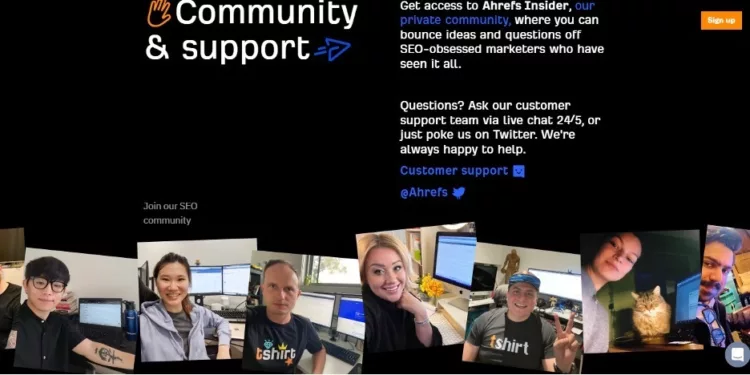
In summary
Launching an online forum for your customers doesn’t mean you already have a community. As we’ve seen, a lot goes into creating an online community for your brand.
First, you must be clear on why you’re creating the community and for whom. This way, you can pinpoint the right strategies to achieve your business goals, including which platform to use and what content to share.
Also, engage, engage, engage! Community is all about engagement. Meaningful interactions drive customer satisfaction, and satisfied customers are loyal customers. As a final tip, promote your online community so it will grow, of course.
Follow these tips, and you’ll build an online community of customers who are fiercely loyal to your brand, and watch it grow. Good luck!
Author Bio
Baidhurya Mani is the founder of SellCoursesOnline.com. He regularly shares tips, tools, and strategies to help creators and entrepreneurs build a successful online course business.
AI's Role in Tailoring Your Web Journey
Related articles:
